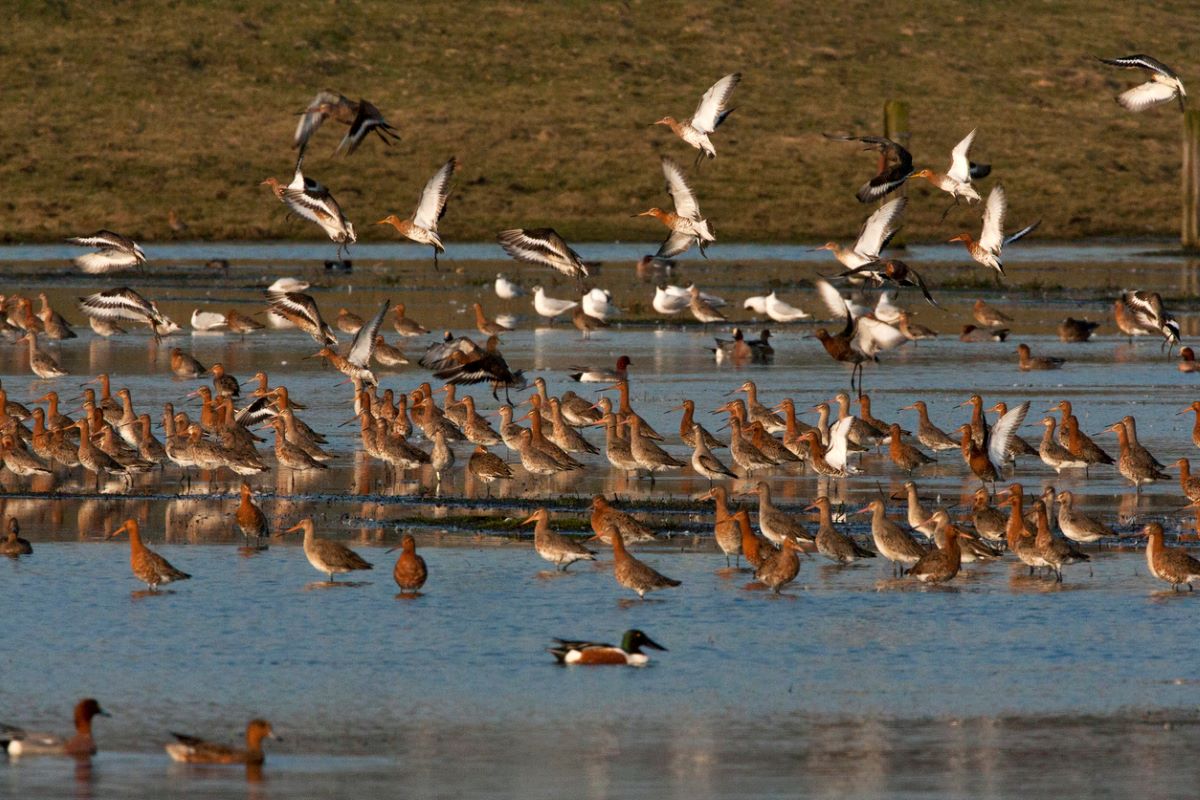Trinamul tears into Suvendu for misleading people
Mr Adhikari in his X handle wrote that permission had been given to set up houses for the affected people.
The winged guests generally fly in from Tibet, China, Mangolia, eastern parts of Europe and Siberia. Many of these also come from Ladakh. Rasik Bill, Mahananda Barrage, Gazoldoba and Nararthali are some of the common places where thousands of migratory fowls of different species normally come in during the first or second week of December every year to spend the winter.

Representational image (iStock photo)
Around 10,000 birds were counted at the Teesta Barrage at Gazoldoba near Siliguri in Jalpaiguri district during the annual waterfowl count this year. Activists said the count was higher than the number of such birds last year.
The Himalayan Nature and Adventure Foundation (HNAF), in association with the forest department, is carrying out the month-long waterfowl count at major water bodies.
“We conducted the count at the Teesta Barrage at Gazoldoba in association with the Baikunthapur Forest Division and the West Bengal Biodiversity Board with 14 members, including bird watchers, divided into five groups yesterday, and it has revealed that the number of species and waterfowls has gone up as compared to last year. According to primary reports, around 10,000 waterfowls have been spotted this year, while it was around 7500 last year. We noticed 64 species last year and this year we have so far counted around 70. We are preparing reports of the counts in four other water bodies too,” said a conservationist and programme coordinator of the HNAF, Animesh Bose.
Advertisement
The count this year is covering four water bodies -Mahananda Barrage at Fulbari, Teesta-Karala confluence, Domohoni Bil and Gonsaihat Bil. The winter waterfowl count will be also be conducted at Murti and Jaldhaka under the Gorumara National Park, Torsha under the Jaldapara National Park, Nararthali Bil under the Buxa Tiger Reserve, Rasik Bil, Falimari Bil in Cooch Behar district, and DianaJaldhaka confluence- Noukabihar under the Jalpaiguri forest division. It may be noted that all these areas have become hotspots for bird enthusiasts and ornithologists.
The winged guests generally fly in from Tibet, China, Mangolia, eastern parts of Europe and Siberia. Many of these also come from Ladakh. Rasik Bill, Mahananda Barrage, Gazoldoba and Nararthali are some of the common places where thousands of migratory fowls of different species normally come in during the first or second week of December every year to spend the winter.
The count is conducted through the block counting and exact counting methods, Mr Bose said. “We have been conducting the survey in all major wetlands of north Bengal. These play a crucial part in maintaining the eco-system. During the bird counts, the overall assessment of the water bodies is also made. We analyse the condition, any threat for the birds and other features,” he added.
At Teesta Barrage, the team spotted some vagrant species like smew, falcated ducks, 36 bar-headed goose, and dunlin. Though the red-breasted merganser was found during the early winter, it could not be spotted during the count. It has also found 2,000-2,500 other birds like the northern lapwing and pacific golden plover. HNAF sends the detailed reports of the counts every year to the Wetlands International and Bombay Natural History Society, while from this year the data-based reports will also be sent to the West Bengal Biodiversity Board, it is learnt.
Advertisement